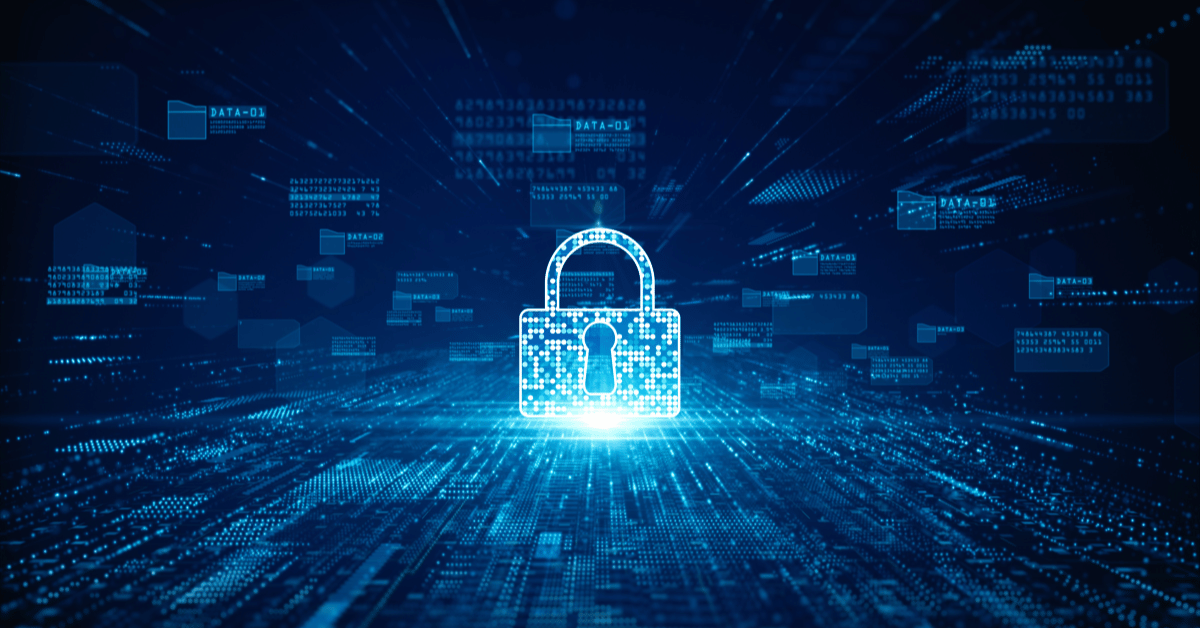Who Enforces Cybersecurity Regulations in the U.S.?
Why have cybersecurity regulations?
Cybersecurity regulations are implemented for various reasons, primarily to address the growing threats and risks associated with cyberattacks. Here are some key reasons why cybersecurity regulations are important:
- Protecting Critical Infrastructure: Many industries, such as energy, finance, healthcare, and transportation, rely heavily on digital systems and networks. Cybersecurity regulations help safeguard critical infrastructure from potential attacks that could disrupt essential services.
- Preventing Data Breaches: Regulations are designed to establish standards for the protection of sensitive information, such as personal and financial data. By implementing cybersecurity measures, organizations can reduce the risk of data breaches and unauthorized access.
- Promoting Consumer Trust: When consumers trust that their data is secure, they are more likely to engage in online transactions and share information with organizations. Cybersecurity regulations contribute to building and maintaining this trust by holding businesses accountable for protecting customer data.
- National Security: Cyberattacks can have significant national security implications. Governments may implement cybersecurity regulations to protect their own systems and networks, as well as to ensure that critical infrastructure and defense systems are secure from cyber threats.
- Addressing Global Threats: Cybersecurity is a global concern, and coordinated efforts are necessary to combat cyber threats effectively. Regulations can provide a framework for international cooperation and information sharing, promoting a collective defense against cyber adversaries.
- Ensuring Compliance: Regulations often mandate specific cybersecurity standards and practices that organizations must follow. This helps ensure that businesses take necessary precautions to protect themselves and their customers, reducing the overall risk of cyber incidents.
- Fostering Innovation: Regulations can also encourage the development and adoption of cybersecurity technologies and best practices. By establishing a baseline for security requirements, regulations provide a framework that promotes ongoing innovation in the field of cybersecurity.
- Mitigating Economic Impact: Cyberattacks can have severe economic consequences, including financial losses, disruption of business operations, and damage to a country's economic stability. Regulations aim to minimize these impacts by enforcing cybersecurity measures that reduce vulnerabilities and enhance resilience.
- Detecting and Responding to Cyber Threats: Regulations often require organizations to have mechanisms in place for detecting and responding to cyber incidents. This helps in minimizing the damage caused by attacks and ensures a timely and effective response.
- Creating a Culture of Security: Compliance with cybersecurity regulations promotes a culture of security within organizations. This involves educating employees, fostering awareness of cybersecurity risks, and establishing a commitment to maintaining a secure digital environment.
In summary, cybersecurity regulations play a crucial role in protecting individuals, organizations, and nations from the evolving and pervasive threats in the digital landscape. They provide a framework for establishing and maintaining a strong defense against cyber threats while promoting responsible and secure practices in the use of technology.
What are the most enforced cybersecurity regulations?
The enforcement of cybersecurity regulations varies across countries and regions. The landscape is dynamic, and new regulations may have been introduced or existing ones updated since then. However, as of my last update, some of the most notable and widely enforced cybersecurity regulations include:
- General Data Protection Regulation (GDPR):
- Region: European Union (EU)
- Key Aspects: GDPR focuses on the protection of personal data and privacy of EU citizens. It imposes strict requirements on how organizations collect, process, store, and transfer personal data.
- Health Insurance Portability and Accountability Act (HIPAA):
- Region: United States
- Key Aspects: HIPAA applies to the healthcare industry and sets standards for the protection of patients' sensitive health information. It includes requirements for data security, privacy, and breach notification.
- Payment Card Industry Data Security Standard (PCI DSS):
- Scope: Global (applies to organizations that process credit card payments)
- Key Aspects: PCI DSS is designed to secure payment card transactions and protect cardholder data. It outlines specific security measures that organizations must implement to safeguard payment card information.
- California Consumer Privacy Act (CCPA):
- Region: California, United States
- Key Aspects: CCPA grants California residents certain rights regarding the collection and use of their personal information by businesses. It includes provisions related to transparency, consumer control, and the security of personal data.
- NIST Cybersecurity Framework:
- Scope: United States (voluntary framework, but widely adopted)
- Key Aspects: Developed by the National Institute of Standards and Technology (NIST), this framework provides guidelines and best practices for organizations to manage and improve their cybersecurity posture. While not a regulation, it is often used as a reference for cybersecurity measures.
- Cybersecurity Law of the People's Republic of China:
- Region: China
- Key Aspects: This law outlines requirements for the protection of critical information infrastructure, data localization, and obligations for network operators to maintain the security of their systems.
- Cybersecurity Law of Singapore:
- Region: Singapore
- Key Aspects: This law mandates cybersecurity requirements for critical information infrastructure (CII) sectors in Singapore. It includes provisions related to data breach notification and the protection of CII against cyber threats.
- Cyber Essentials (UK):
- Region: United Kingdom
- Key Aspects: Cyber Essentials is a scheme developed by the UK government to help organizations protect against common cyber threats. While not a regulation, it is often a requirement for organizations seeking government contracts.
It's essential to note that the regulatory landscape is subject to change, and new regulations may have been introduced or existing ones revised since my last update. Organizations should stay informed about the specific cybersecurity regulations that apply to their industry and geographic location. Regularly checking with relevant regulatory bodies and legal sources is crucial to ensure compliance with the latest requirements.
Who enforces cybersecurity regulations in the U.S.?
In the United States, multiple agencies play a role in enforcing cybersecurity regulations, each with its specific focus and jurisdiction. The enforcement landscape is distributed across various government entities. Here are some key agencies involved in enforcing cybersecurity regulations in the U.S.:
- Cybersecurity and Infrastructure Security Agency (CISA):
- Role: CISA is a key agency responsible for enhancing the nation's cybersecurity resilience. It provides guidance, shares information on threats, and works with various sectors to secure critical infrastructure. CISA plays a significant role in implementing and enforcing cybersecurity measures at the national level.
- Federal Trade Commission (FTC):
- Role: The FTC is tasked with protecting consumers and promoting fair competition. It enforces consumer protection laws, including those related to cybersecurity and privacy. The FTC takes action against companies engaging in unfair or deceptive practices related to data security.
- National Institute of Standards and Technology (NIST):
- Role: While not an enforcement agency, NIST develops and promotes the Cybersecurity Framework, which is a set of voluntary guidelines and best practices for organizations. Many regulatory bodies and industries in the U.S. reference NIST standards as part of their cybersecurity requirements.
- Department of Homeland Security (DHS):
- Role: DHS has a broad mandate for securing the nation, and it works in collaboration with other agencies to address cybersecurity threats. CISA, mentioned earlier, operates within DHS.
- Securities and Exchange Commission (SEC):
- Role: The SEC oversees the securities industry and enforces regulations to protect investors. In recent years, the SEC has increased its focus on cybersecurity, requiring public companies to disclose cybersecurity risks and incidents.
- Department of Justice (DOJ):
- Role: The DOJ is involved in investigating and prosecuting cybercrime. It works with other federal agencies to address cyber threats, including those with national security implications.
- State Attorneys General:
- Role: State-level attorneys general have authority over certain aspects of consumer protection and data breaches. They can enforce state-specific regulations related to cybersecurity and privacy.
- Office for Civil Rights (OCR) - Department of Health and Human Services (HHS):
- Role: OCR enforces HIPAA regulations in the healthcare sector, ensuring the protection of individuals' health information. It investigates complaints and conducts audits to ensure compliance with HIPAA standards.
It's important to note that the regulatory landscape is dynamic, and the roles and responsibilities of these agencies may evolve over time. Additionally, various industry-specific regulators may also have a role in enforcing cybersecurity regulations within their sectors. Organizations operating in the U.S. should stay informed about the specific regulations relevant to their industry and comply with the requirements set forth by the appropriate regulatory bodies.
Which cybersecurity regulations are the least adhered to?
Certain regulations may face challenges in terms of enforcement or compliance due to various reasons:
- Cybersecurity Law of the People's Republic of China:
- Reasons: The Cybersecurity Law of China imposes stringent requirements on companies, including data localization and mandatory security assessments for certain technology products. However, there have been concerns about the practicality and challenges of compliance for both domestic and foreign businesses.
- General Data Protection Regulation (GDPR):
- Reasons: While GDPR has been widely embraced and enforced in many European countries, there have been instances of non-compliance, especially among smaller businesses or organizations outside the European Union. Some entities may struggle with the complexity of the regulation and the resources required for compliance.
- State-Specific Data Protection Laws in the U.S.:
- Reasons: In the United States, a patchwork of state-specific data protection laws is emerging, such as the California Consumer Privacy Act (CCPA) and other state-level regulations. Compliance challenges may arise due to the evolving nature of these laws and the need for businesses to navigate a complex regulatory landscape.
- Cyber Essentials (UK):
- Reasons: While Cyber Essentials is a voluntary scheme in the United Kingdom, some small and medium-sized enterprises (SMEs) may not prioritize or be aware of the program. Lack of awareness and perceived barriers to implementation could contribute to lower adherence.
- Various Industry-Specific Regulations:
- Reasons: Some industry-specific regulations may face challenges in terms of adherence, particularly among smaller organizations within those industries. For example, financial institutions may be more likely to adhere to cybersecurity regulations due to the nature of their business and regulatory oversight, while adherence in other sectors may vary.
It's important to note that adherence to cybersecurity regulations can change over time, and efforts to improve compliance are ongoing. Regulatory bodies, industry associations, and governments often work to raise awareness, provide guidance, and enforce compliance through audits and penalties.
Additionally, as the cybersecurity landscape evolves, new regulations may be introduced, and existing ones may be revised to address emerging threats and challenges. Organizations should regularly assess and update their cybersecurity practices to align with the latest regulatory requirements and industry standards.








